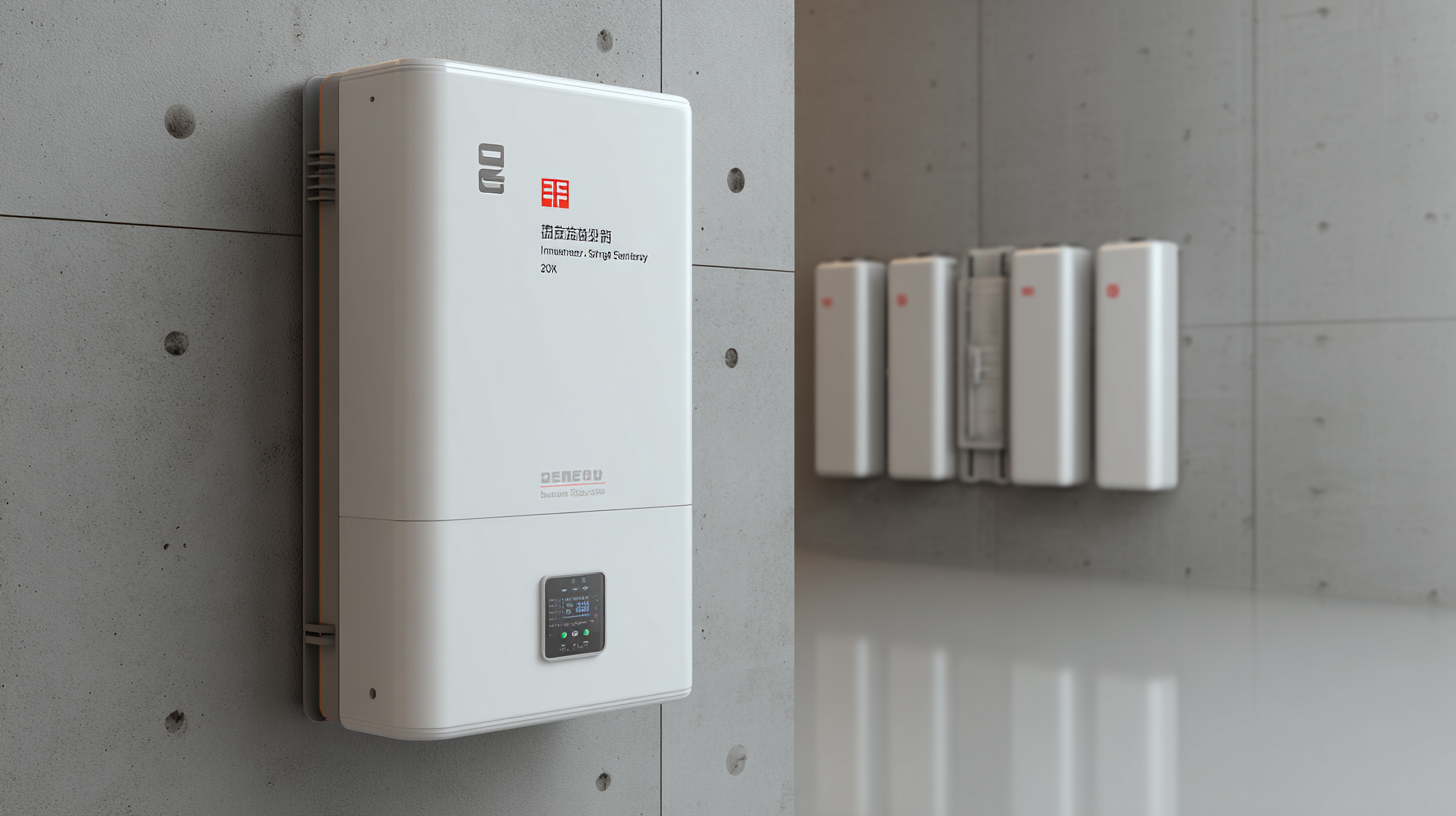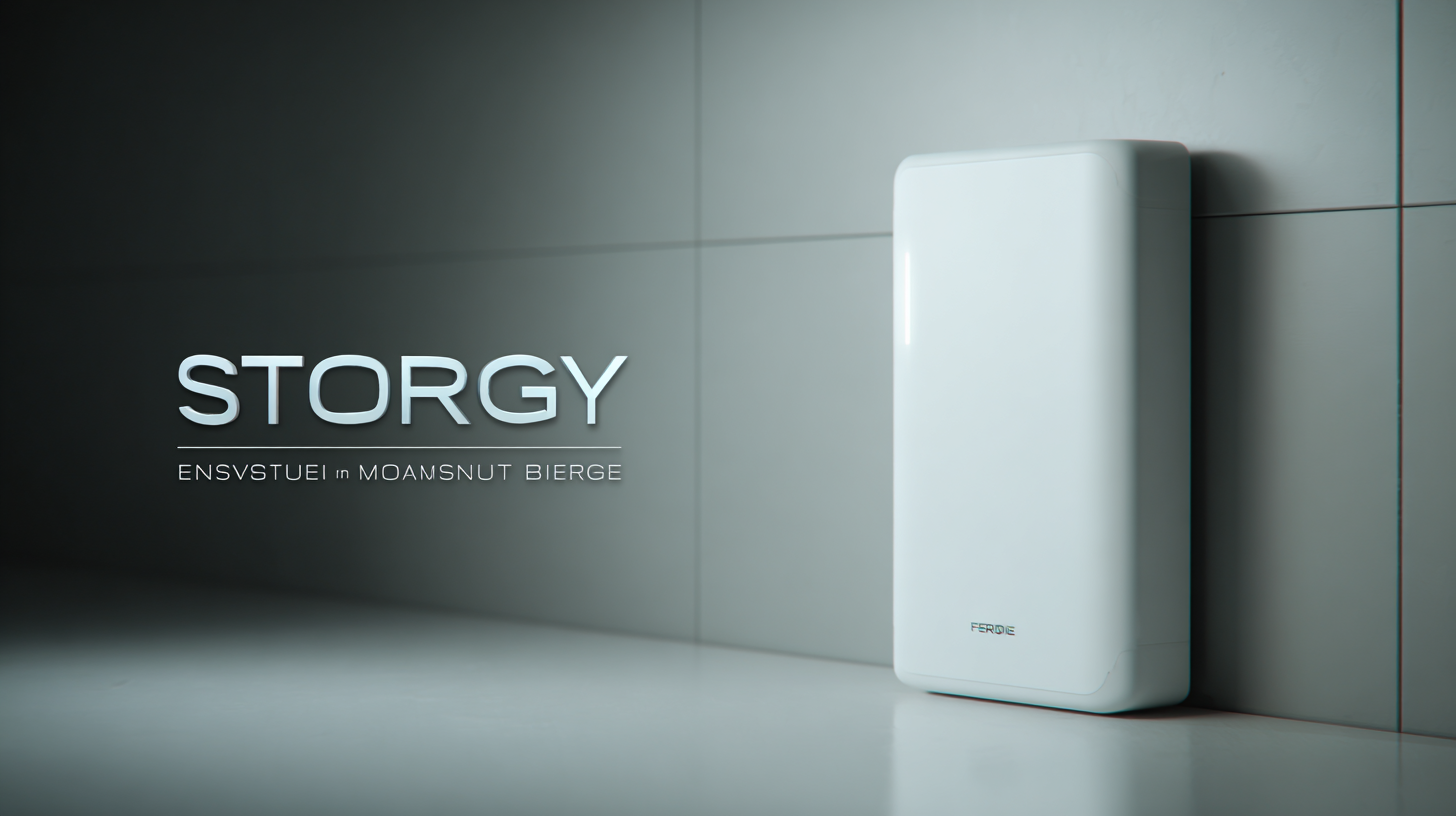Factory Tour
Innovative Solutions for Wall-Mounted Energy Storage Batteries
As the global demand for sustainable energy solutions continues to rise, the Wall-Mounted Energy Storage Battery market is poised for significant growth, projected to reach approximately $22 billion by 2025, according to recent industry reports. This surge is driven by the increasing adoption of renewable energy sources such as solar and wind, which necessitate efficient energy storage systems to manage supply and demand fluctuations. Furthermore, advancements in battery technology, including lithium-ion and solid-state batteries, are paving the way for innovative applications in residential and commercial energy storage. These solutions not only enhance energy efficiency but also contribute to energy independence, making Wall-Mounted Energy Storage Batteries an essential component of modern energy strategies. In this blog, we will explore the latest industry trends and innovative strategies for leveraging these technologies effectively in the evolving energy landscape.

Innovative Design Approaches to Wall-Mounted Energy Storage Systems
The world of energy storage is rapidly evolving, and wall-mounted energy storage systems are at the forefront of this revolution. Innovative design approaches are transforming how these systems are integrated into homes and businesses. By focusing on modular architectures, manufacturers are now able to create energy storage solutions that are not only efficient but also aesthetically pleasing. These designs often incorporate sleek, compact units that blend seamlessly with interior design, allowing for easy installation without taking up valuable floor space.

Furthermore, advancements in smart technology have led to the development of intuitive interfaces that enhance user experience. Systems are now equipped with monitoring applications that provide real-time data on energy usage and storage levels. This level of interaction empowers users to optimize their energy consumption, making informed decisions about when to draw from or store energy. By combining functionality with innovative design, wall-mounted energy storage batteries are becoming essential components of modern energy management, catering to both practical needs and consumer preferences.
Advancements in Technology for Efficient Energy Utilization
The growing demand for renewable energy solutions has spurred significant advancements in wall-mounted energy storage batteries, vital for efficient energy utilization in residential and commercial settings. According to a report by Wood Mackenzie, the global energy storage market was valued at approximately $5.4 billion in 2021 and is projected to reach about $15.6 billion by 2026, highlighting the accelerating trend towards innovative energy storage solutions. These batteries not only store excess energy generated from solar panels but also help in managing peak load demands, enhancing overall energy efficiency.

Recent technological innovations such as lithium iron phosphate (LiFePO4) batteries have made wall-mounted storage systems safer, longer-lasting, and more efficient. Research by the International Energy Agency (IEA) suggests that LiFePO4 batteries possess a lifecycle of over 10,000 cycles, significantly outperforming traditional lead-acid batteries. This advancement ensures that homeowners and businesses can store energy for longer periods without the risk of degradation, ultimately leading to reduced energy costs and a smaller carbon footprint. Furthermore, the integration of smart grid technology allows these systems to optimize energy usage in real time, providing users with valuable insights and control over their energy consumption.
Sustainable Manufacturing Practices in China’s Battery Industry
In recent years, China's battery industry has made remarkable strides towards sustainable manufacturing practices, crucial for minimizing environmental impact while meeting rising energy storage demands. According to a report by the International Energy Agency, global demand for lithium-ion batteries is projected to increase by 70% by 2030, a trend significantly fueled by the shift towards renewable energy sources. China's commitment to sustainable practices is evidenced by its initiatives to implement circular economy principles within battery production, reducing waste and enhancing resource efficiency.
**Tip:** When considering energy storage solutions, prioritize companies that emphasize sustainability in their manufacturing processes. Certifications such as ISO 14001 can indicate a manufacturer's commitment to environmental management.
Furthermore, advancements in battery recycling technologies are set to play a pivotal role in China's sustainable evolution. The Chinese Ministry of Industry and Information Technology estimates that recycling could meet up to 60% of the demand for lithium, cobalt, and nickel by 2025. This not only conserves valuable resources but also significantly reduces the carbon footprint associated with mining.
**Tip:** Always inquire about the recycling and end-of-life management strategies offered by battery manufacturers, as this can significantly impact the overall sustainability of your energy storage solution.
Innovative Solutions for Wall-Mounted Energy Storage Batteries - Sustainable Manufacturing Practices in China’s Battery Industry
| Category | Metric | Value | Unit |
|---|---|---|---|
| Battery Type | Lithium-ion | N/A | - |
| Production Capacity | Annual Production | 500,000 | Units |
| Recycling Rate | Battery Recycling | 90 | % |
| Energy Density | Gravimetric | 200 | Wh/kg |
| Cost per kWh | Manufacturing Cost | 150 | USD |
| Lifecycle | Recharge Cycles | 3000 | Cycles |
Global Market Trends and the Future of Energy Storage Solutions
The global market for energy storage solutions is undergoing a transformative shift, driven by increasing electricity demand and a growing emphasis on renewable energy sources. Wall-mounted energy storage batteries have emerged as a crucial innovation in this landscape, offering a compact and efficient way to store energy for residential and commercial use. As countries aim to reduce their carbon footprints, the adoption of these systems has risen significantly, with manufacturers developing more advanced technologies that promise higher efficiency and longer life cycles.
Future trends indicate a rapid expansion of the energy storage market, propelled by technological advancements and policy support. Batteries are becoming smarter, integrating with home energy management systems to optimize energy consumption and reduce costs. Additionally, declining prices of battery components are making wall-mounted storage more accessible to consumers. In the coming years, the interplay of increased energy independence and environmental sustainability will likely shape the future of energy storage solutions, establishing wall-mounted batteries as a vital component of smart energy grids worldwide.
Case Studies: Successful Implementations of Wall-Mounted Batteries
As the demand for electric vehicles continues to surge, innovative solutions for wall-mounted energy storage batteries are gaining traction. These compact systems are not only crucial for enhancing energy efficiency but also play a pivotal role in addressing sustainability challenges across the battery value chain. Case studies from various regions highlight how wall-mounted batteries have been successfully implemented in residential and commercial settings, allowing users to optimize energy consumption and reduce dependence on the grid.
One notable example involves a community project that integrated wall-mounted storage systems with solar energy installations. This approach not only maximized the use of renewable energy but also significantly lowered electricity costs for participating households. Furthermore, by enabling quicker charging times and minimizing peak load on the grid, these systems contribute to a greener overall energy infrastructure. Such successful implementations underscore the potential of wall-mounted batteries to support the growing electric vehicle market and promote sustainable energy practices in everyday life.






